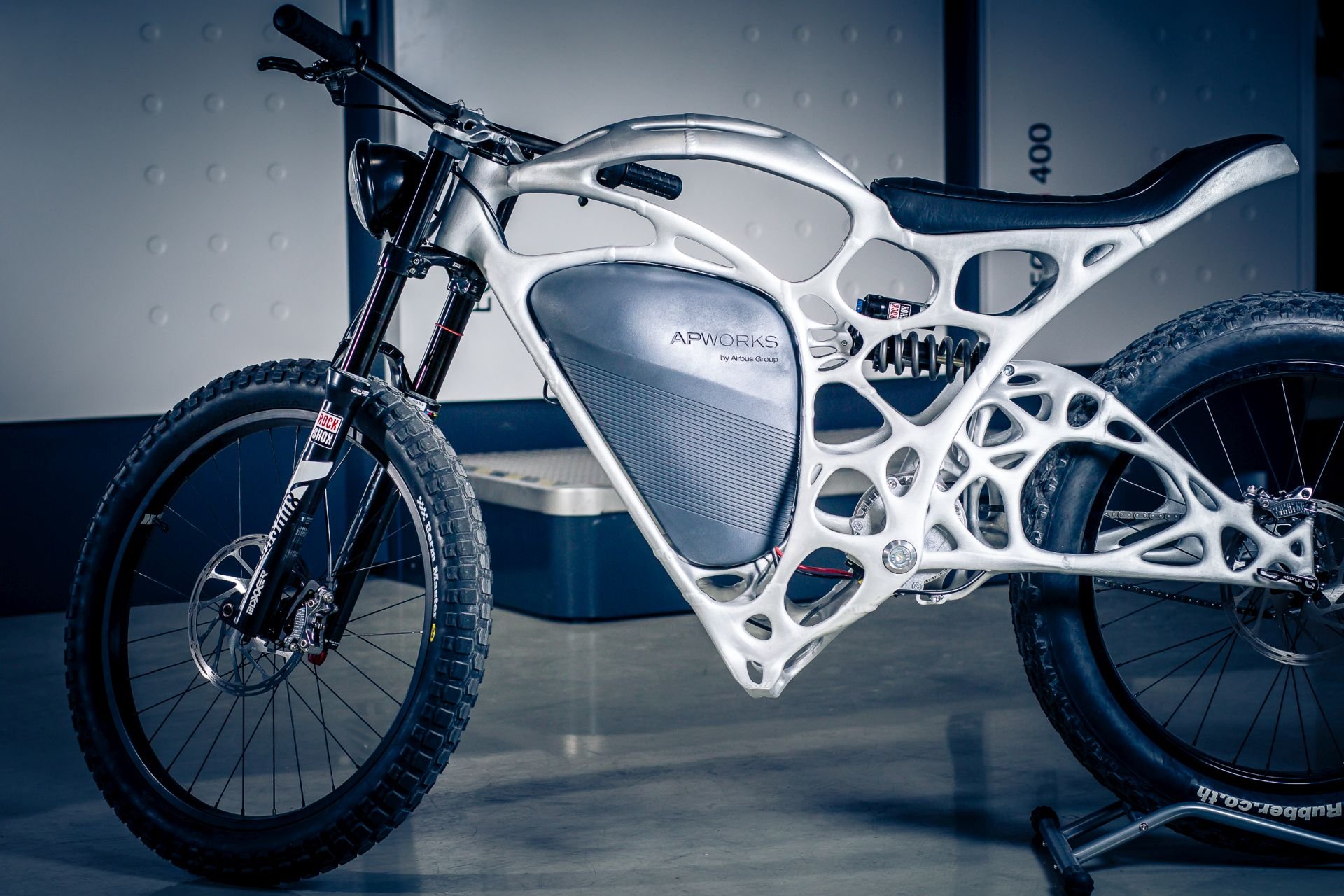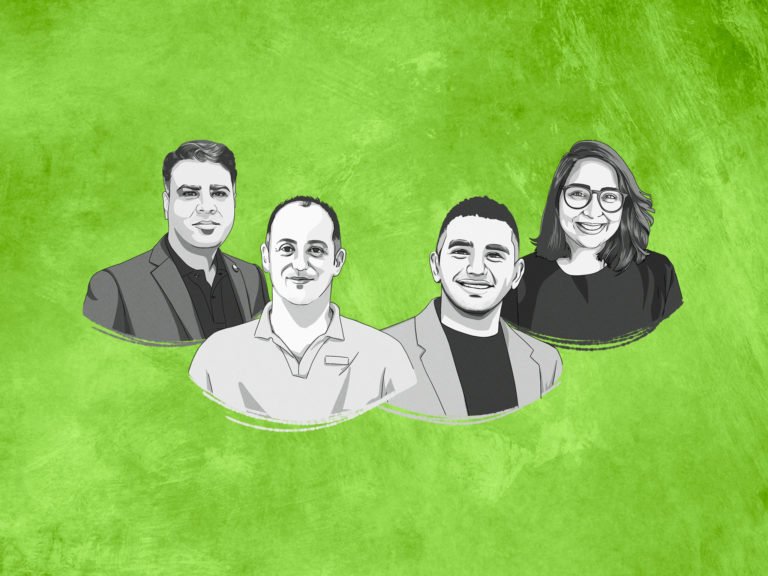It was only a matter of time before artificial intelligence truly found its feet in the design space. When Apple introduced Siri, back in 2011, it was evident that some sort of barrier was broken. If we look at relatable forms of AI-powered technology like Google Assistant and Tesla’s Autopilot, it’s easy to see how far we’ve come. Of course, there also exists far more hardcore applications – big data, advanced defence systems, fraud detection – these are no small feats. But after listening to an exceptionally enthralling talk by Tatjana Dzambazova (who was with Autodesk at the time), we believe that we’ve reached a new frontier in the realm of computer-enabled design.
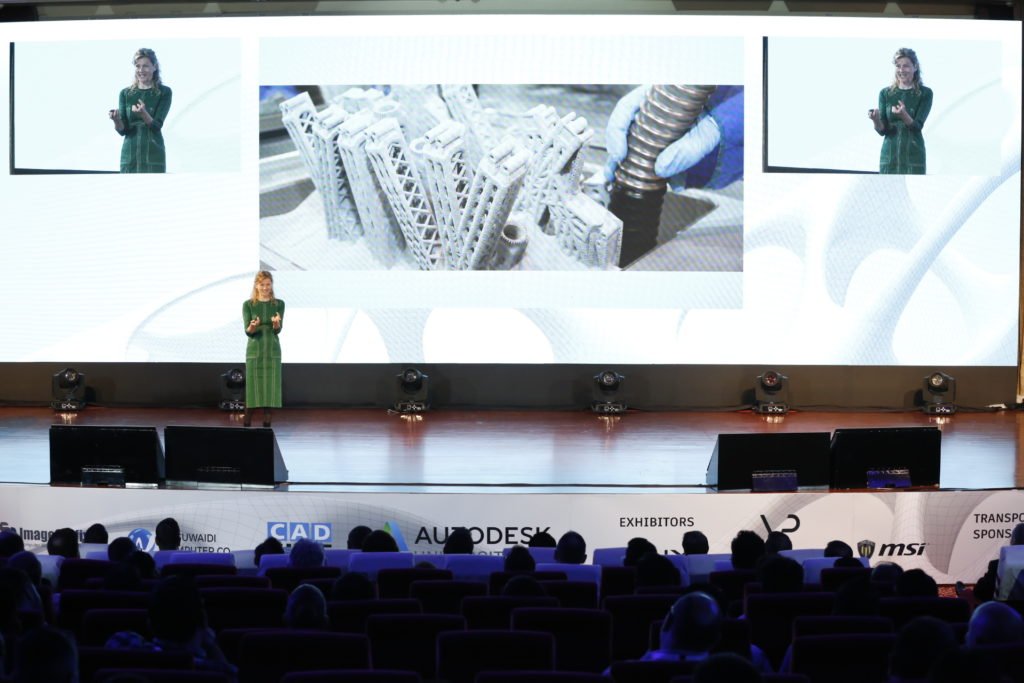
An eager storyteller with an overflowing passion for technology, Tatjana was the head of AI Strategy at the office of the CTO. She’s been with Autodesk for over 17 years, and you can tell she’s perennially fascinated by how technology enables a more creative life. When we had met her at Autodesk University (AU) Middle East’s Sixth Edition, we were fortunate enough to pick her brains on Autodesk’s exponentially powerful new software feature – Generative Design. The project is a reflection of their belief that Artificial Intelligence and Machine Learning (ML) can heavily impact the world of design. It stems from a vision of the future where new technologies would help humans create the best version of man-made creations and scale this process on to larger objects, like entire buildings!
Shifting the Burden of Learning to Machines
Humans hold the undisputed title of being the most intelligent creatures on the planet. But we have our limitations. In the case of learning, we’re limited by the speed at which we capture, retain and understand information. Speed was perhaps not so much an issue in the stone age when our ancestors had to wrap their head around making stone tools. But then came the industrial age, followed by the digital age. And tools have become increasingly sophisticated; by the time we’re finished learning one, we’ve already moved to a newer or improved version.
Why is this a problem? We build machines to do what we tell them to. But if we spend so much time learning how to ‘tell’ them, we’ll be playing catch-up forever. The more sophisticated a machine or software, the harder it is to learn; and the gap only seems to grow with time.
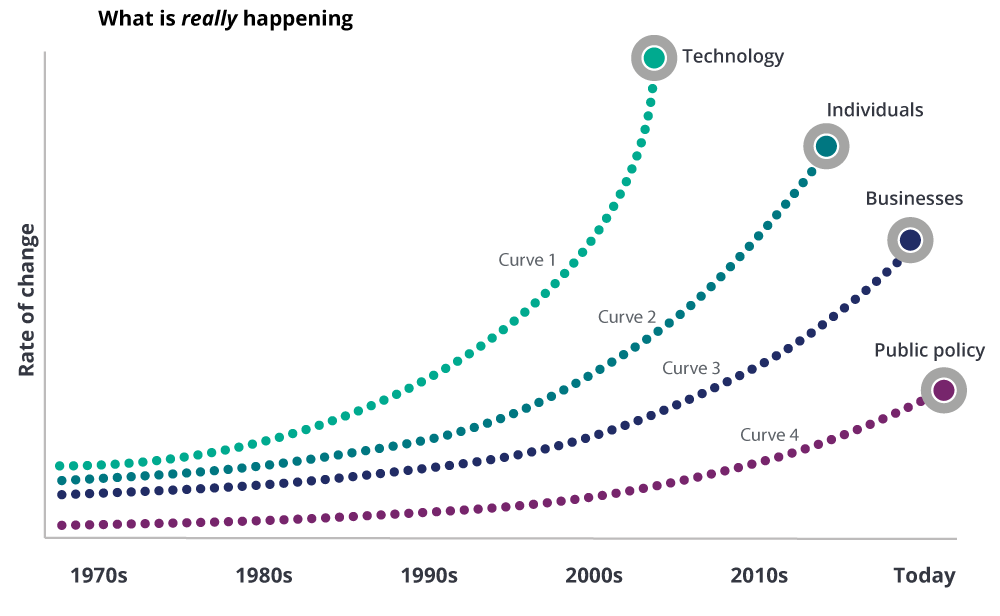
What is Generative Design, and how is it better?
It’s an approach wherein a designer first defines high-level goals and constraints into the design software. It uses AI-based algorithms to simultaneously generate multiple valid solutions based on real-world manufacturing constraints and product performance requirements. The software synthesizes inputs and produces multiple thousands of solutions and models, based on thousands of computers analyzing past and current data at the same time. The result is a design and solution that couldn’t be conceived or drawn by a human, and one is already manufacturing-ready.
Speed and processing capabilities aren’t the only advantages. The Generative Design is completely unbiased, unlike the human mind, which is often influenced by one of around 175 known cognitive biases. A computer does not care much for a manager’s opinion (authority bias) or that your fifth attempt was better than your first (anchoring bias). The software can objectively compute the best possible outcome based purely on logic.

You’d be mistaken if you compared this new tool to an optimization tool. It’s not topology optimization. In fact, an optimization tool does what nature has been doing for thousands of years – using the least amount of material to create the most efficient parts, but essentially, a modification of existing structures (like human evolution). The Generative Design tool, on the other hand, analyzes the problem and what needs to be done – the result may or may not look like anything you had in mind.
Efficient, Effective, and Sustainable
The best way to understand this is to see it in action. And a good place to do so is at Autodesk itself – the firm used their own tools to design their MaRS office in Toronto – the first large-scale example of a generatively-designed office space. An architecture firm, The Living, used computational workflows and generative learning to optimize the design goals and create a space that takes into consideration the welfare of each of the 250-plus individual employees who work there.
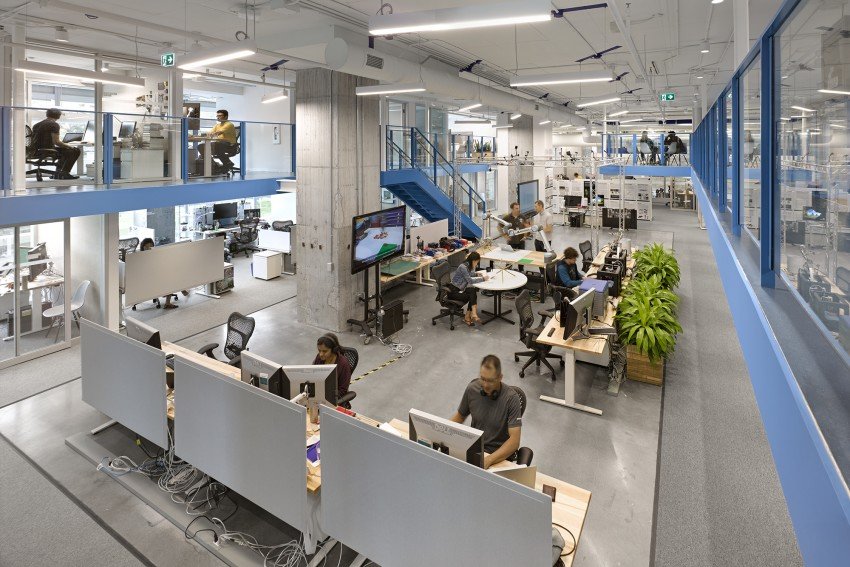
On the manufacturing side of things, we’ve got General Motors (GM) taking the lead. Any engineer will tell you – The lighter a car, the less fuel it uses and the lesser carbon it emits. Simple stuff. And GM has been doing a great job at it. Since 2016, GM has launched 14 new vehicle models with a total mass reduction of over 5000 pounds or more than 350 pounds per vehicle. But they wanted to do better. So they decided to team up with Autodesk to use a combination of generative design and additive manufacturing to do this.
The result is the image you see below – a new seat bracket design. From nearly 150 designs, engineers zeroed in on a new design, whose organic structure no human could have conceived on their own. It is 40 percent lighter and 20 percent stronger than the original part. It also demonstrates another major benefit of generative design – part consolidation. The new part consolidates eight different components into one 3D-printed part.
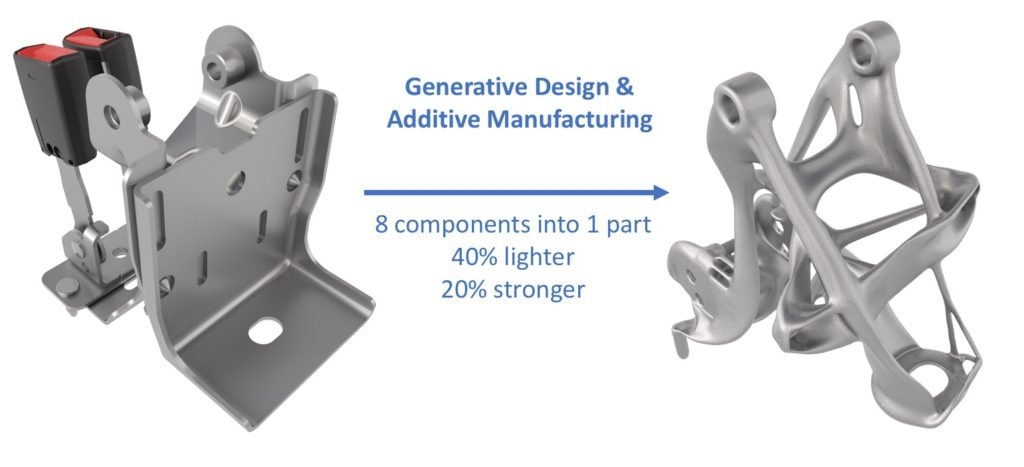
If you’re still not convinced, check out how Airbus uses generative design to produce significantly lighter aeroplane parts. To keep it short, the designs are inspired by evolutionary patterns in nature like slime mould and bone structures and use just the right amount of materials in the right directions to create the most efficient designs. New parts like 3D printed bionic partitions or seat-frames that use 45 percent less material, a massive improvement for aeroplanes. Improvements like this can save around $200 Million over 10 years of a plant’s lifecycle. And at the same time, it would reduce carbon emissions by taking 8000 cars off the road every year.
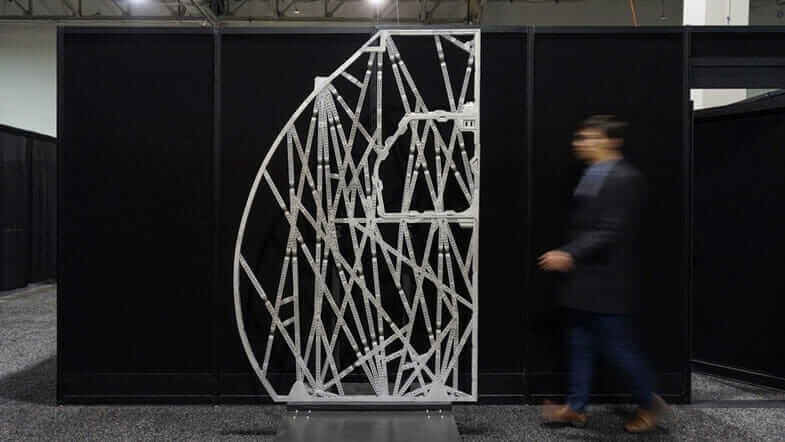
The Future
Whether you’re an engineer, product designer or an architect, it’s an exciting time to be in the design space. When you pass on a load of complex problem solving and repetitive tasks to computers, you’re free to focus on high-level decision-making like maximizing performance or deciding on the effectiveness of a space. The savings in time and the resulting productivity is enormous. We now have the ability to not only create the best versions of the objects we design but also produce them with sustainably, thanks to technology like 3D printing.

